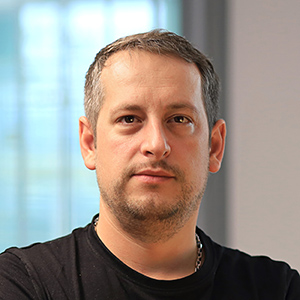A Crash Course in OpenStack Terminology
Why is it necesssary, you ask?
It’s true that in companies we don’t change the type of environment very often, but it still happens – global providers have extreme prices, providers change the pricing model, as for example in the case of VMware, it so happens that the change is inevitable.
But the transition from one provider to another may not be easy. The transition from one platform to another hides some pitfalls. One of them is the different philosophy with which the individual platforms are created. It follows that different environments have different vocabulary, although the words may mean the same thing. We all know it – Big Mac, Whopper, but they’re both hamburgers.
There are 4 virtualization platforms, at least the most widespread ones. So, if you happen to change direction and move to OpenStack, here is a mini glossary on how to orientate yourself in the environment as quickly as possible.
1️⃣ What's Different but What You Don't Have to Learn With?
OpenStack is a robust virtualization, but even so, deploying VMs is a simple matter. The platform is equipped with a wizard, which facilitates the work with resources and images, so starting up servers is really a piece of cake.
In addition, an indisputable advantage is the great involvement of automation in all activities that no longer have to bother our lives.
2️⃣ What Is Different and Needs to Be Learned?
We will look at the terminology and also a bit of the philosophy, because we cannot avoid it for the successful deployment of servers. But first, the word play.
- Instance – this is the name for each virtual machine. So we can say it is equal to a VM. When deploying virtual machines, OpenStack gives you freedom for setting their size – it depends on the total pool of resources allocated to the platform, but also on the images that are available. However, their lines can be expanded, i.e. fully adapted to needs.
- Security Group – this term is used for the firewall.
- Volume – here you might even dare to guess that it is a disk. If you have an OpenStack environment in Czech, you will also encounter the name svazek, but I advise you to keep OpenStack in English for your own comfort and peace of mind.
- Key Pair – it’s a key, it’s a pair it’s an SSH key.
- Floating IP – this is probably clearer, because the IP indicates that it is a public IP address.
And now a little more philosophy. One of the basic things you still need to add to the dictionary is that in order to run an instance, you must first have a network set up.
You can start the process of creating an instance, but the platform will still start yelling at you in due time that you don’t have a network set up. So if you don’t want to jump here and there, jump to set up the network first.
📖 Dictionary Over
I promised a crash course and it was like that, i.e. rather a short course, but that also counts. Equally important is the attitude with which we approach the new platform. If our attitude is being annoyed by default, even the best manual wouldn’t help us. But if change is inevitable, then it is inevitable.




